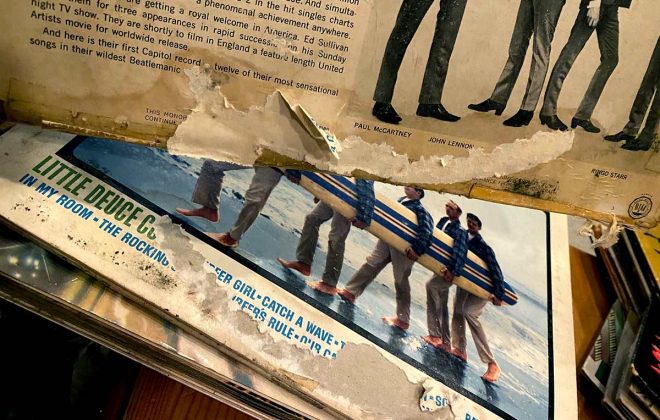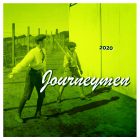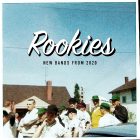Console: A (semi) Functioning Prototype
If you’ve been reading along, you’ll know that I’ve started the process of building my own music console. Each of the installments should stand on its own but if you wanted to start at the beginning, here it is.
I’ve been busy.
I’ve ordered parts from all over the internet and while the pandemic has slowed things down, I’ve been able to source and test nearly everything I need. I have a prototype!
As you can see I still have some things to figure out—the joystick control for Plex is still wonky, I may have to switch to buttons. The proximity of the aux-in and headphones jack to the volume knob is less than optimal—I inherited their placement from the amp I bought. I’ll have to work on both.
It’s a good time for a status check though.
Speakers
A neighbor was freecycling an old pair of Bose 301 Series IIs speakers. I picked them up. I nervously plugged them into an old amp.
Not only did they work… they sounded great! The signature was so familiar to me—an old roommate had a pair and we would listen to music all evening long after work up until bedtime. They sounded like home. Plus the size is right. Sold.
Amplifier, Tone, VU, Switch
I settled on a Dayton 60W/channel class D amp. When I tested this with the speakers… shocked. So clean. Not in love with the click on power up and down, but I can live with it as long as it doesn’t damage anything. Frankly, it’s kind of nostalgic too.
Tone board was ordered. Required a separate center tap 12V power transformer. Plugged it in and wasn’t impressed though it worked fine.
Woke up the next morning, turned it on, and got nothing but static. It fried. I have a new (different) one on the way. Fingers crossed this one doesn’t burn out.
VU meters? How sweet is it to watch those little arms bounce with the beat? Also—great for helping me balance all my inputs and making sure my preamp (part of tone board) is set right.
I chose a pushbutton switch to move between sources. After looking at the boards and switches in the box, I’m glad I did. There’s no audible crosstalk or contamination between channels—it’s mostly well wired and solid state. Love it.

Bluetooth?
While the amp has bluetooth built-in, that’s going to be a big fat nope.
The problem with built-in bluetooth is automatic switching. If I paired my phone with the amp, then every time I came into the room the phone would connect, the switch would flip, and bluetooth would override everything else in the system. To fix it, I’d have to manually disconnect my phone from the system to hear a record or load a digital file. No thanks. I don’t like bluetooth that much—especially with Apple’s less than stellar audio quality.
Instead, I bought a dedicated bluetooth receiver and plugged it into the switch. Phone will still automatically connect, but if I want to hear it I have to select the switch on the system.
Digital Playback
I think I mentioned that I have a bunch of my music in lossless format on a hard drive being served up to all my devices by Plex.
We had a raspberry pi sitting around from an old project that seemed like a good option for a dedicated client. I bought a D/A hat for it and installed Rasplex. But I needed a monitor.
Then I picked up a 7 inch touchscreen monitor with a pi mount on the back that seemed like the perfect setup. I ran all the wires, got it configured, turned it on and it was great…
Except for the touchscreen part. In my head touchscreen is like my phone. In reality it’s not—my phone is multi-touch. It reacts to gestures and multiple touchpoints simultaneously. A touchscreen does not. It simply recognizes the x,y coordinate of a touch on the screen and relays that back to the computer as a mouse click on the interface.
When I recognized my mistake I was crushed. I knew I’d have to find another input method. The Plex interface was optimized for use with a remote: it has no scroll bar, back button, or navigation buttons. All selection is done relative to what’s highlighted: left, right, up, down, click. Not great for a touchscreen.
I did some research and landed on an arduino based solution that uses an analog thumbstick along with a couple of buttons to mimic the keystrokes of a standard keyboard. After a lot of coding and troubleshooting, I got it to the point that it works… but it’s so wonky it’s not really pleasant to use.

I’m going to have to pull out a multimeter or see if I can get the arduino output to give me the actual voltage coming out of the x and y axes of the thumbstick—it’s not centered properly and once I know the voltage range and what it reads at rest, I can custom code for this particular thumbstick instead of supporting all of them.
The other advantage of using Plex is its remote control feature. From just about any Plex client you can control any other currently open Plex client—even rasplex! I’ve been using that feature from my laptop and it’s super convenient.
State of the Project / Next Steps
I’m really happy with how this sounds and operates—even without a functioning tone board.
I’m surprised by how much I love the “thunk” of the pushbuttons as I switch the source.
The digital feedback and analog VU meters make me smile.
The sound is surprisingly good for something cobbled together like this.
Next I’ll have to fix the thumbstick control. I’ll also want to explore ways to break out the elements of the amplifier. I’ll need to extend the volume control and then run extenders to the input/headphone jacks so I can get a better overall face design. I’d also like a bigger volume knob and smaller tone control knobs.
I’m also considering material for the faceplate. I have been thinking about gray or black anodized aluminum with decals for labeling. Raw aluminum is pretty great looking too.
It’s also time to start designing the overall box—what’s going to hold all this together and fit in the space?
I’ll also need to find a source for inexpensive walnut wood.
Lots to do!









